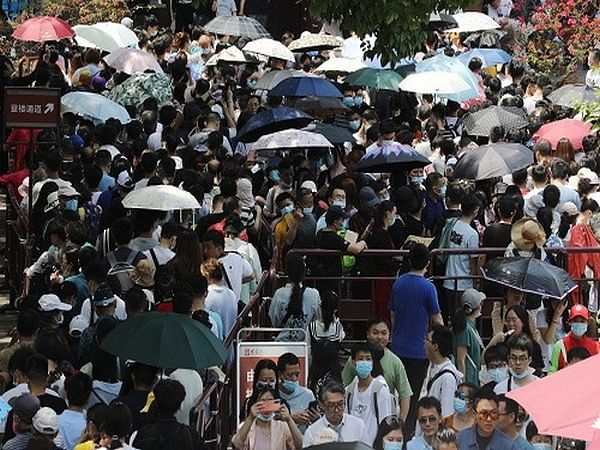Beijing [China], February 27 (ANI): A recent report has shown that even as the Chinese Communist Party offers young newlyweds 30 days of paid holiday as part of its three-child policy, many women are skeptical that real progress will follow. The Global Institute for Women’s Leadership’s new collection, Essays on Equality: The politics of childcare, pointed out the unwillingness among Chinese women to have more children. The essay has uncovered anomalies in the 3-child policy stating that the policy has infringed upon women’s reproductive rights and added an unequal burden of childcare responsibilities, affecting their careers, the Voice Against Autocracy reported.
The birth rate downturn in China is the result of a “one child” policy imposed between 1980 and 2015, and a surge in education costs that have put many Chinese against having more than one child, or even having any at all.
The Chinese government implemented a one-child policy for 35 years (1980 to 2015) and compelled millions of women to forced contraception, forced sterilization, and forced abortion.
Due to plummeting birth rates, the government wanted women to have more children and swiftly moved from a one to two-child policy in 2016. But that too failed to yield the desired results. However, the government swiftly moved to a three-child policy in 2021 and offered tax cuts, subsidies, cash rewards and other incentives.
The Voice Against Autocracy reported that none of these has worked so far and China’s birth rate continues to drop. The total fertility rate decreased from 2.6 in the late 1980s to just 1.15 in 2021. In fact, in 2022 the population might have declined for the first time since the Great Famine of 1959 to 1961, according to a projection by the Shanghai Academy of Social Sciences.
The three-child policy met with widespread cynicism online.
People opposed it using an analogy of a luxury car. “I’m not buying three Rolls-Royces not because there’s any restriction, but because they’re expensive,” a post on the Chinese social media platform Weibo read.
“I want to sell my quota to rich people,” wrote another. Women in China have resisted 3 child policy because of the unequal burden of childcare responsibilities and its potentially detrimental impact on their careers.
A 2020 study, on the impact of family planning policy changes on urban women, reported that 45 per cent of respondents said their employment was negatively affected by pregnancy or childrearing.
Over one-third of women reported financial loss, and more than 20 per cent described losing opportunities for training or promotions.
Another 13 per cent said they were fired or forced to resign, and eight per cent said they experienced demotion. The study pointed out that companies do not want to hire women employees who might be absent during the three to six months of maternity leave, and the costs associated with hiring a replacement.
The Chinese government has taken some steps to assist women in the workplace. In November, the government amended the Women’s Rights and Interests Protection Law, the highest law concerning gender equality in the country, for the first time in nearly 30 years, the Voice Against Autocracy reported.
Among the provisions to combat gender discrimination in the workplace, the law banned employers from inquiring or investigating the marital and maternal status of female job applicants or making such status a condition for employment.
The Women’s Protection Law, which came into effect in January 2023 is likely to strengthen enforcement, which has been poor so far. In August 2022, 17 central government agencies jointly issued a notice outlining the government’s plan to increase the birth rate, with one of the major measures being increasing government-sponsored childcare facilities and services.
The Chinese Communist Party’s latest offer to young newlyweds is 30 days of paid holiday, it has given some hope to the government that it would boost the country’s falling birth rates.
China has smartly created an eco-system to ensure the fertility rate increases. Couples of reproductive age are being offered incentives so that they can comply with 3 child policy. But the reality is contrary to the government’s expectations. China’s population fell last year for the first time in six decades. Last year, China recorded its lowest-ever birth rate, of 6.77 births per 1,000 people.
However, the government should develop programmes to reduce discriminatory gender norms related to childcare responsibilities, end discriminatory parental leave policies, expand parental leave policies and protections for both men and women who wish to take it, and ensure the availability and affordability of childcare and other forms of professional caregiving. And most importantly, the government must abolish the three-child policy because birth limits, no matter the number, are fundamentally an infringement on women’s reproductive rights and bodily autonomy, stated the essay in Global Institute for Women’s Leadership’s new collection. (ANI)
This report is auto-generated from ANI news service. ThePrint holds no responsibility for its content.



